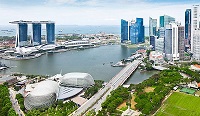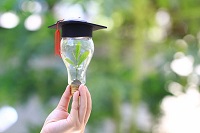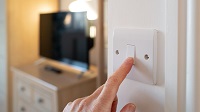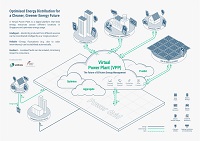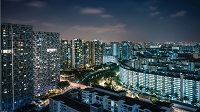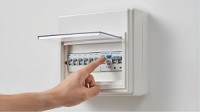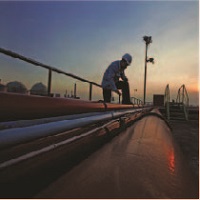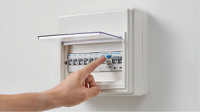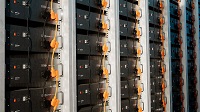Solar energy is one of the four switches in transitioning towards greener energy sources. Clean and plentiful, it is also the most promising renewable energy source for Singapore.
In this edition of EMA Explores, our energy guru EMA Watt-son uncovers more about the benefits of solar energy with Jason Law, Managing Director of SunPro Energies. EMA Watt-son also takes this chance to discover how this local enterprise is harnessing the power of the sun for a greener energy future.
I was at Orchard Road last weekend and spotted solar panels on a shopping mall’s rooftop. Do you know anything about it?
Jason: Yes, Ngee Ann City was one of SunPro Energies’ projects where we installed solar panels on their rooftop carpark. The mall utilises the clean energy generated from the solar panels to power air-con, lights, lifts and shops in the entire building. In fact, it is one of the largest solar installations in the heart of Orchard Road!
Other solar installations that we have done include the rooftops of HDB flats, SAFRA clubhouses, large industrial buildings as well as landed properties.
There is a common misconception that Singapore is not doing much to tap into solar energy as most installations are not within our line of sight. But if you look at the rooftops of HDB flats, industrial buildings and landed properties, quite a number of them already have solar panels installed.
As a solar system integrator, SunPro Energies is proud to be an active partner in sustainable green energy. We design and build solar photovoltaic (PV) systems and also help our customers take better control of their energy usage.
What are the benefits of solar energy?
Jason: Being practically at the equator, Singapore receives abundant sunlight throughout the year. That is why solar – which does not produce carbon when used for power generation – is the most viable clean energy source for us. Afterall, we do not have fast-flowing rivers for hydropower or high wind speeds to harness wind energy.
Singapore aims to scale up our solar deployment to meet our target of 2 gigawatt-peak (GWp) of solar by 2030 – which could generate enough energy to meet the annual electricity needs of 350,000 households. I am confident that if we put our minds, energy and resources together, we will be on track to meet this target.
Why does Singapore need to be creative in our solar deployment efforts?
Jason: With limited land space, we will not be able to utilise all our rooftop space for solar due to competing uses.
That’s why we have been getting more creative in our solar deployment efforts.
For instance, we have a 60 megawatt-peak (MWp) floating solar farm on Tengeh Reservoir installed by Sembcorp Industries. Spanning an area of 45 football fields, this solar farm can power around 16,000 4-room HDB flats for one year and reap carbon emission reductions equivalent to removing 7,000 cars from roads. In fact, this solar farm is currently powering our national water agency PUB’s five local water treatment plants, making Singapore’s waterworks 100% green.
There is also the building-integrated photovoltaics (BIPV) which refers to the concept of replacing conventional building materials in a building envelope, such as roofs, facades or skylights, with photovoltaic materials to generate electricity. While the initial setup may be expensive, it is more cost-effective in the long run as it serves the dual purpose of being the outer layer of a building and generating electricity from solar.
What else is being done to help us harness more solar energy in Singapore?
Jason: To overcome the intermittency of solar, one way is to make use of energy storage systems to store the energy generated for later use.
Besides relying on technology, an area that is often neglected is to see how we can drive a mindset change on electricity usage among consumers. If we keep using more and more electricity, no amount of solar will be sufficient to meet our needs. But if we are smarter in the way we use electricity, solar may be able to power more of our daily needs over time.
So, beyond the business of solar installation, SunPro Energies is moving into the Internet of Energy, where the clean electricity produced can be monitored and effectively allocated to power the different parts of a building or electric vehicle charging stations. This ensures that their carbon footprint and energy usage are properly tracked and utilised in the most efficient manner as possible.
Another burning question that many people have: If sunlight is free, why do we still need to pay for electricity generated from the sun?
Jason: Energy from the sun may be free but harnessing that energy is not. There are costs involved such as the installation of solar PV systems.
Having said that, with technological advancements and greater efficiency of solar panels, the cost of solar panels has decreased over time and will likely continue to do so. This may bring down the overall cost in the future.
What happens to old solar panels?
Jason: Solar panel cells can actually last for decades, although prolonged exposure to rain, dust and pollution can affect the amount of power that they generate. For optimal performance, I recommend home and building owners to engage professional maintenance to regularly clean and test their solar PV systems.
What is your aspiration for solar or sustainable energy?
Jason: Singapore has been forward-looking and innovative in advancing our green energy transition. With solar energy being one of the four switches, I am confident that we can move towards more sustainable energy sources.
While the government has been introducing initiatives to encourage adoption of solar PV installations, I hope more individuals and businesses can play their part as well. They could try to be more receptive towards installing solar PV systems or come up with creative solutions and technological improvements to encourage solar adoption.
Got a bright idea on how Singapore can tap into more sustainable energy sources? Share your suggestions with us! And don’t miss the next story as EMA Watt-son continues her search for more great stories on our energy transition journey.
